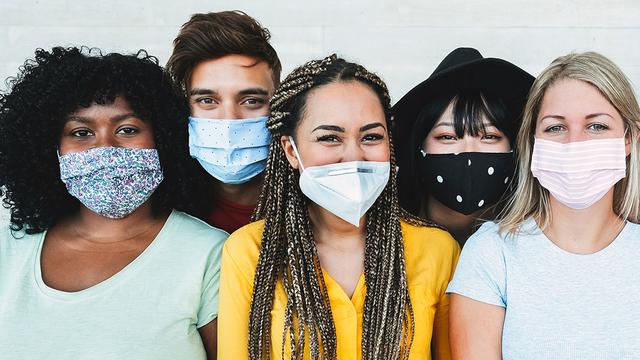Profound gender inequities that persist in Minnesota were exacerbated by the COVID-19 pandemic, according to the 2022 Report on the Status of Women and Girls in Minnesota released Wednesday by the Center on Women, Gender, and Public Policy at the Humphrey School of Public Affairs and the Women’s Foundation of Minnesota.
The report shows progress in some areas since the last biannual report. But systemic gender and racial inequities continue to trap many women in poverty, compromise their safety, hinder access to healthcare, and limit leadership opportunities. Inequities for women and girls accumulate over a lifetime and are impacted substantially by race, place, LGBTQ+ status, and other identities pushed to the margins.
Researchers will share highlights of the report in an online presentation on March 17, which is open to the public.
“This report begins to show the longer-term and disparate impacts of the COVID-19 pandemic on the well-being of women and girls in the state, with more severe impacts on women and girls of color and Native women and girls,” said Professor Christina Ewig, director of the Center on Women, Gender and Public Policy, who led the research project. “It is now time to address the systemic roots of these disparities through public and private sector action.”
The report focuses on four distinct issue areas.
Economics
The COVID-19 pandemic has revealed and exacerbated many of the underlying factors that prevent women in Minnesota—and the nation—from achieving economic security.
Women continue to comprise the majority of workers in the state earning at or below the minimum wage and working in low-wage fields. Women of color were hardest hit by COVID-19 layoffs as were women-owned businesses, in part due to their concentration in sectors most vulnerable to pandemic-related closures. The wage gap facing all women in Minnesota has barely changed over the past five years.
Women’s economic vulnerability increases over a lifetime, which can lead to housing insecurity, debt, poverty, and reduced access to health care in old age.
Safety
Women and girls in Minnesota are harmed by gender-based violence across their lifetimes – in their homes, on the streets, and in public institutions like schools, workplaces, and the criminal justice system. One in two Minnesota women report sexual violence, and one in four report physical violence from a partner in her lifetime.
The 2022 report highlights ongoing health and safety disparities affecting Native women in Minnesota. Native American women face violence at alarming rates, with more than 85 percent experiencing violence and 56 percent experiencing sexual violence in their lifetimes – a 20 percent greater likelihood compared to white women.
Sexual orientation and gender identity also influence safety. More than half of LGBTQ+ people say they or someone they know have been harassed because of their sexual or gender identity. Trans women experience cumulative effects of discrimination, including barriers to employment, housing, and healthcare, which renders them vulnerable to violence, housing and job insecurity, and homelessness.
Health
COVID-19 highlighted the health risks that stem from the cumulative effects of economic disparities and systemic racism, compounded by lack of access to health care for all Minnesotans. Even before the pandemic, Minnesota saw growing health inequities for women and girls of color, Native Americans, LGBTQ+ people, and women and girls in Greater Minnesota.
“Increased insurance coverage in Minnesota under the Affordable Care Act was a critically important step toward health equity,” noted Ewig. “There is still more to be done, however, to close the race gap in health insurance coverage.” One in three Latina women and one in five Black women in Minnesota reported that they could not see a doctor because of costs in the past year.
The report highlights significant racial disparities in disease, including mortality rates for cancer that are greater for Native American and Black women. Native American and Black women experience the highest rates of breast cancer mortality compared to women of other racial and ethnic groups. Native American women have the highest incidence of any group of cervical cancer.
The report also shows disparities based upon place, including the high teen birth rates in rural Minnesota. Of all rural Minnesota counties, more than 47 percent have no sexual health clinic, while Hennepin County has 18 such clinics. “For expectant mothers in rural areas, care is becoming increasingly inaccessible,” said Ewig. In rural Minnesota, hospitals offering birthing services dropped by 38 percent.
Leadership
Although women’s representation among Minnesota’s corporate executives has risen in recent years (to 22 percent in 2020), at the current rate it would take 54 years to reach gender parity.
In local politics, men continue to dominate county governments, and women are underrepresented in municipal offices. Yet, the number of women mayors is growing in Minnesota. Women now lead 32% of all Minnesota cities over 30,000. “In this year’s report we expanded our data on women and law, and found that in 2021, women achieved parity with men as state court judges,” said Ewig.
Even though women dominate the teaching profession, they are not proportionately represented in top leadership. The teaching profession in Minnesota is overwhelmingly white. Only 4% of teachers in the state are non-white, compared to 22% of the population.
Read the complete report Register for the March 17 webinar
About the Status of Women & Girls in Minnesota project
Launched in 2009, Status of Women & Girls in Minnesota is an ongoing collaborative research project of the Women’s Foundation of Minnesota and the Center on Women, Gender, and Public Policy (CWGPP) at the Humphrey School of Public Affairs. The project represents a unique approach to research by using a gender-race-place-equity lens. The data included come from original analysis by the CWGPP of publicly available datasets (American Community Survey, Minnesota Student Survey, and others) and from published reports produced by government agencies and nonprofits.


